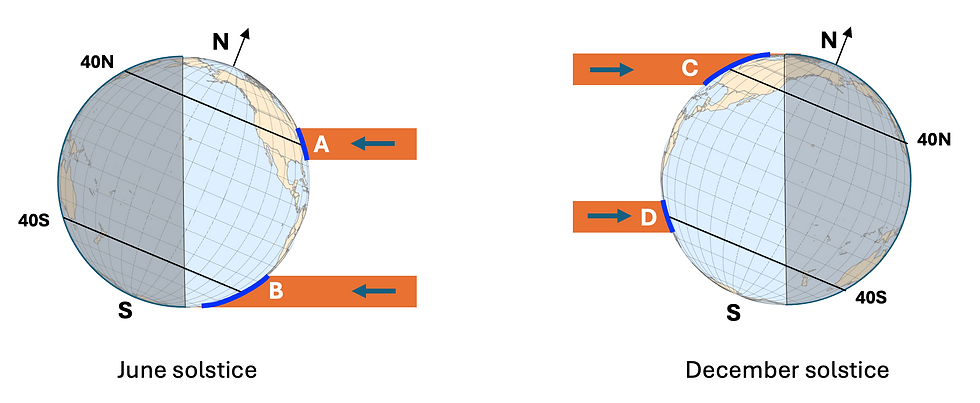The Cause of the seasons
- brianaull
- Jul 5
- 2 min read

According to a 2013 article in the Havard Gazette, studies suggests that 95% of people don't understand the cause of the seasons. A common misconception is that they are caused by variations in the distance of the sun. If that were true, the Northern and Southern Hemispheres would have the same seasons at the same times. We know that summer in one hemisphere coincides with winter in the other.
The Earth's orbit
As the Earth orbits the sun, its axis stays fixed (neglecting longer term motions), with the North Pole pointing to a place very close to the North Star. The axis is tilted about 23.5 degrees from the plane of the orbit.

The orbit is also slightly elliptical. Earth is closest to the sun in early January and farthest in early July. This is just the opposite of what you would expect if you thought the distance to the sun causes seasons in the Northern Hemisphere. Also, the variation in distance anywhere in the world over the course of a year is only 3%. So, the explanation for seasons needs to be found somewhere else.
The cause of the seasons
Let's compare the illumination of the Earth at the two solstices, shown below.

At the June solstice (left) the North Pole is tilted toward the sun. Regions near latitude 40N receive close to perpendicular illumination (A), whereas regions near latitude 40S receive much more oblique illumination (B). Comparing the thick blue curves, the more oblique illumination causes the energy from the sun to be spread out over a larger area, resulting in less warming of the Earth's surface. At the December solstice (right) the North Pole is tilted away from the sun. Places in the Northern Hemisphere (C) are illuminated more oblquely than places in the Southern Hemisphere (D). The pattern of warming is reversed.
What about daily temperature cycles?
We can explain daily temperature cycles in a similar way. As the sun moves from high noon toward sunset, there is no perceptible change in its apparent size in the sky. (Note: don't look at the sun.) This is because its distance from us is changing by at most 40 parts per million. As the afternoon wears on, the illumination becomes and more oblique. By late afternoon, the ground starts shedding stored heat more rapidly than it gains heat from the sun. So, the temperature peaks and then starts falling.



Comments